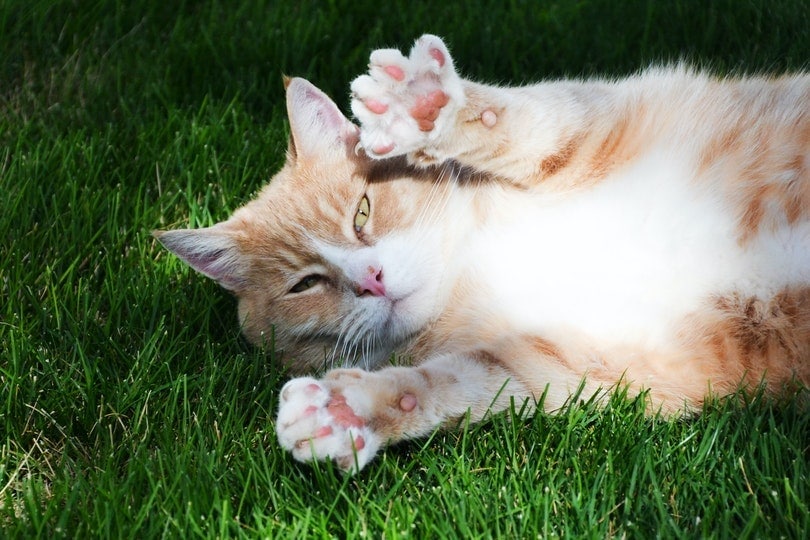How to Stop a Feline From Climbing a Tree (6 Methods)

Updated on
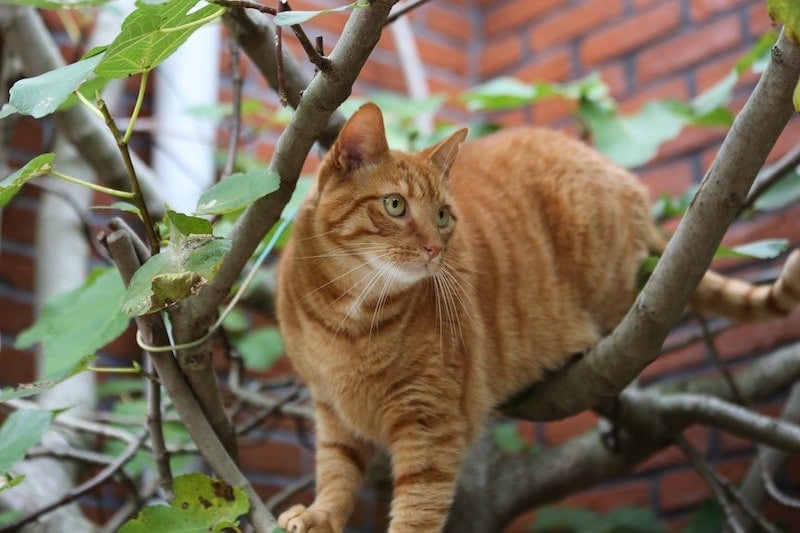
Cats are confident in their climbing and leaping skills, but they take their nine lives for granted when they scurry up tall trees. If a cat is frightened after reaching the tree’s summit, it may be challenging to lure the animal back to the ground. Depending on the cause of the cat’s decision to climb high, the feline may feel safer at an elevated position.
Retrieving a cat from a tree is no easy feat, but how do you stop a cat from climbing a tree in the first place? We’ll examine the methods you can employ to prevent your little fur ball from climbing the giant tree in your yard.
The 6 Methods to Keep a Cat From Climbing Trees
1. Keep Your Pet Indoors
The ideal technique for preventing tree climbing is to keep your cat indoors. Active outdoor cats are less vulnerable to the dangers of obesity than indoor cats, but they face several threats, including speeding automobiles, large predators, unethical humans, rodent poison, and pests that carry disease. Indoor kitties enjoy longer lifespans than outdoor pets, but it can be difficult to transition a free-range feline to a happy house cat.
If your pet is accustomed to spending the day outdoors, you must provide additional activities indoors to keep it mentally and physically stimulated. Cat toys and a sturdy cat tree are excellent starting points, but you can also consider adding a new pet to your home. A new feline or canine friend can keep your pet occupied, and your cat will be less willing to escape outside to scale the tall pine in the backyard.
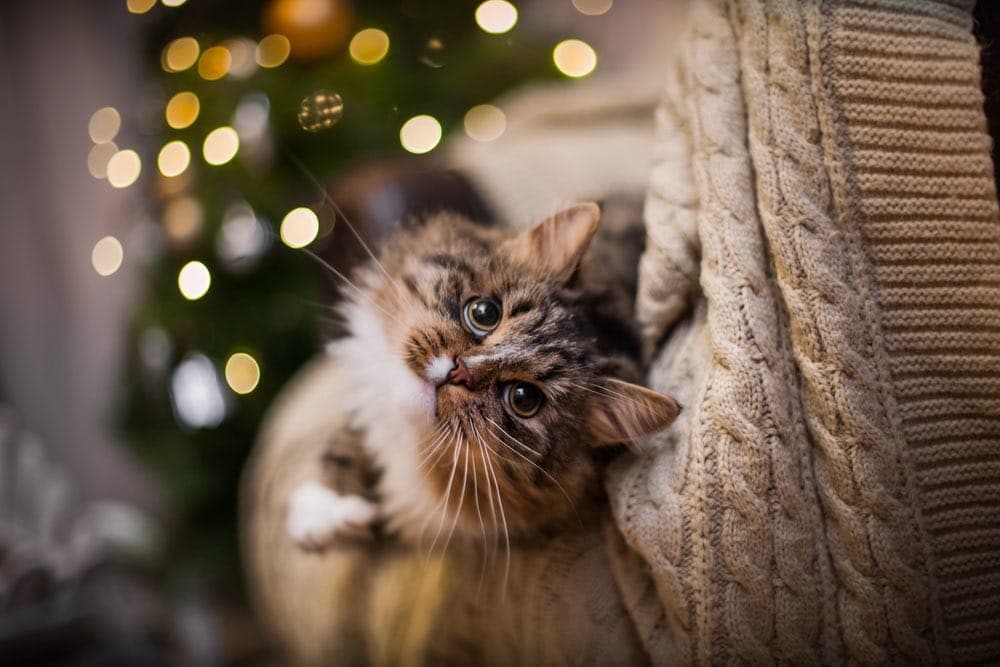
2. Install Motion-Activated Sprinklers or Noisemakers
Unless you have a Bengal or other breed that loves water, you can install motion-activated sprinklers near your trees to keep your pet away. If a cat approaches a tree and is blasted with cold water, it’s more likely to run away than continue the journey up the tree. Hardware stores and online distributors sell motion-activated devices to deter wildlife, and you can use the same systems on your cat.
Cat owners living in colder climates with frigid winters cannot keep a water hose connected in sub-zero weather, but they can install noisemakers. Although you can spend a bundle when you have several trees in your yard, most of the noisemakers are relatively inexpensive unless you opt for premium models.
3. Wrap Your Tree With Metal Flashing
Cat claws can easily sink into tree bark to allow felines to scale great heights, but they’re not designed to handle smooth surfaces. Homeowners often install sheet metal guards around tree trunks to prevent squirrels, rats, or raccoons from accessing the roof or attic. Before adding flashing to a tree, you can estimate how high your pet can leap. Most cats can jump 4 or 5 feet, but accomplished leapers can leap even higher.
After marking the spot on the tree, measure the tree’s circumference with a fabric tape measurer. You’ll add 2 inches to the figure to allow for overlap. Cut the correct length from the sheet metal and drill two holes on each side of the sheet. Instead of damaging the tree with nails or spikes, you can thread a metal wire through the holes and tie the ends together to fasten the metal to the trunk. Some online writers have suggested using aluminum foil since it’s cheaper than sheet metal, but you must replace foil often when it’s battered by harsh weather.
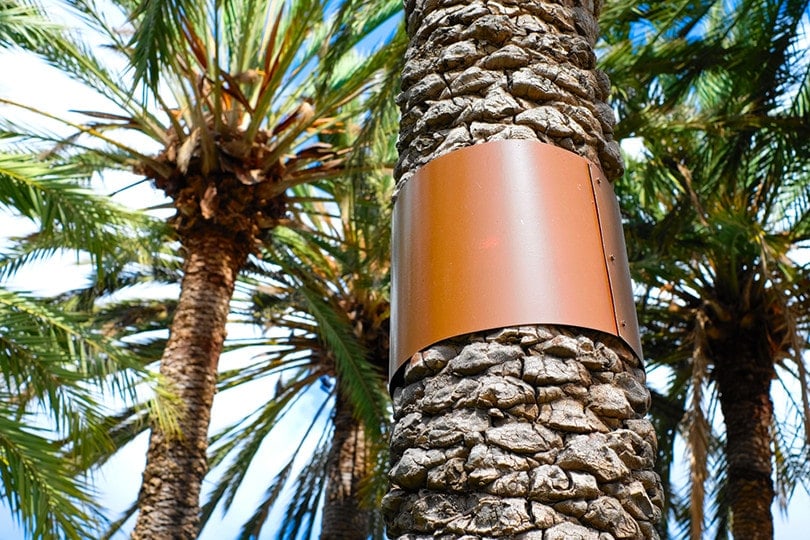
4. Install a Chicken-Wire Cone
You may have seen vinyl or metal cones around bird feeders to keep squirrels from raiding birdseed, and you can use the same method to deter tree climbing. After cutting a section of chicken wire to fit around the trunk, wrap the chicken wire above the point that your cat would jump. Fasten with a twist tie or metal wire and fan out the bottom section so that the structure resembles a lampshade.
5. Use a Spray Deterrent
Another inexpensive way to keep your pet out of trees is to use spray deterrents. Spray the tree’s trunk from the ground to around 6 feet high. Most products are washed away by the rain, and you’ll have to reapply the solution after a storm.
6. Entice Your Pet With an Indoor Cat Tree
Cats love to climb and leap onto high vantage points so they can observe the world below, and you’ve probably observed your pet lurking on a bookshelf or refrigerator. With a cat tree in your home, you can keep your cat from pining for an outdoor excursion up the tree. Look for trees with a sturdy base and a strap that attaches to the wall for stability. Some brands are just as expensive as human furniture, but you can find high-quality cat trees that cost around $100.
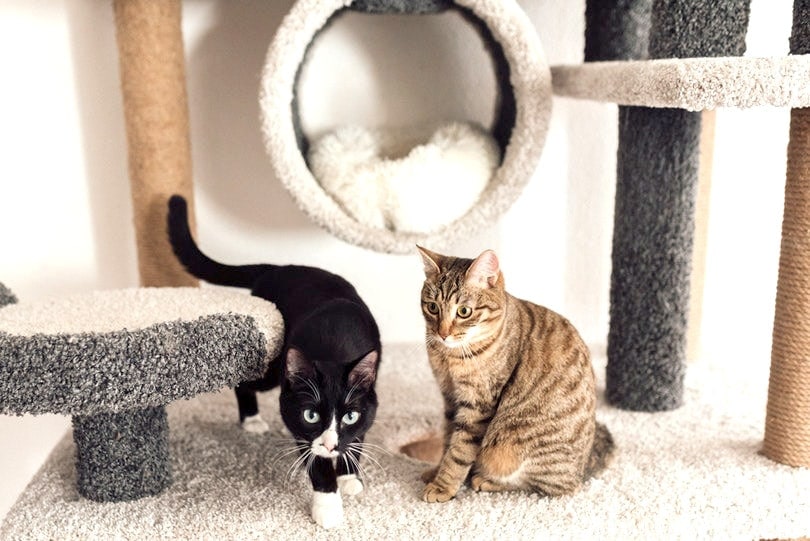
 Why Do Cats Climb Trees?
Why Do Cats Climb Trees?
Animal scientists and veterinarians continue to analyze feline behavior to help the world’s cat lovers understand their mysterious pets, and although several questions remain unanswered, the experts have a few theories on why cats run up trees.
Chasing Prey
Although our feline friends seem sweet and lovable, they’re descended from wild cats that relied on their hunting skills for survival. Most cats have high prey drives that compel them to chase any creature approaching their territory. They’re not likely to catch a healthy squirrel that runs up the tree, but they’ll certainly pursue one until they feel uncomfortable about the elevation.
Escaping Predators
When a neighbor’s dog is on the loose or a coyote is prowling the area, your outdoor kitty will typically choose to flee to avoid a confrontation rather than fight. Trees provide safety for escaping felines and offer a 360° view of the surrounding area. A frightened cat will not be willing to descend the tree until the predator has left. Cats’ hind legs are much stronger than their front legs, and while their body structure helps them climb up, they’re not designed for climbing down headfirst like a squirrel.
Exploring the Landscape
If your cat is not being chased or tempted by a small animal, why would it run up a tree? Cats struggle with boredom like humans, and sometimes, their curiosity leads them to bad decisions. Your pet might run up the elm tree in the front yard because it seems like an amusing activity.
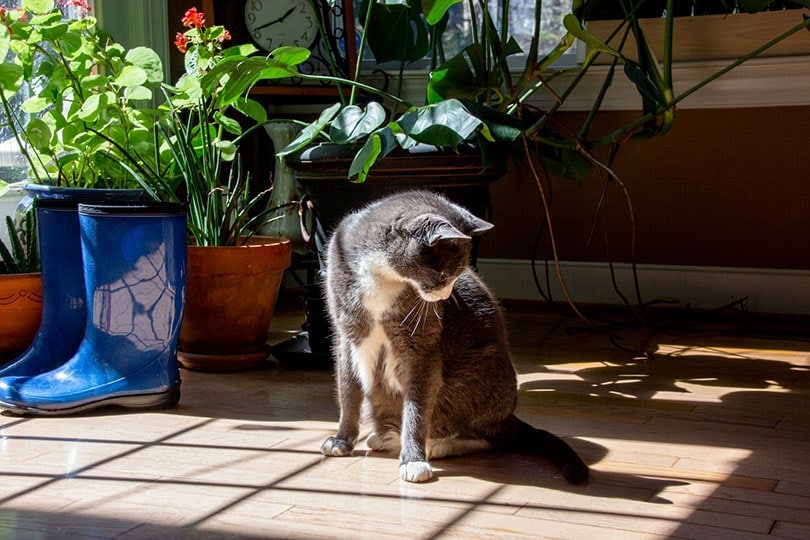
Final Thoughts
Keeping your cat out of a tree will prevent a lengthy rescue attempt and eliminate the chances of a deadly fall. You cannot train a cat to live without climbing, but you can convince your pet to seek entertainment indoors. An outside pet will struggle to adjust to an indoor environment, but cats are skilled at adaptation, and over time, your furry friend will enjoy perching in a cat tree or laying on the elevated shelf beside your priceless Ming vase.
Featured Image Credit: Unsplash

 Why Do Cats Climb Trees?
Why Do Cats Climb Trees?